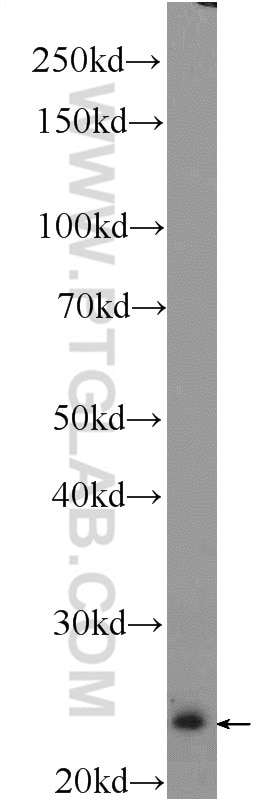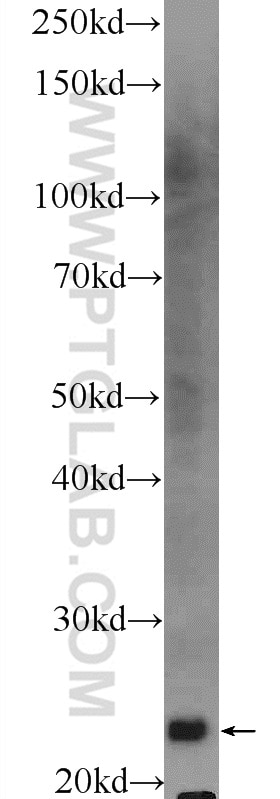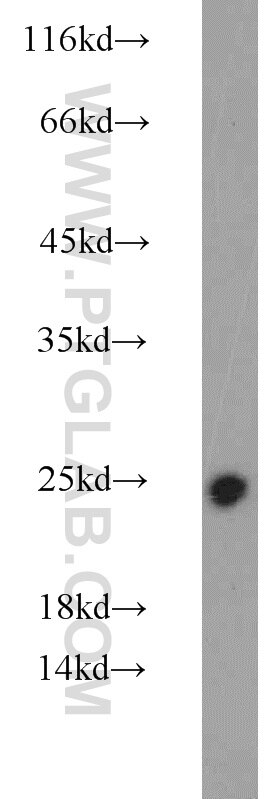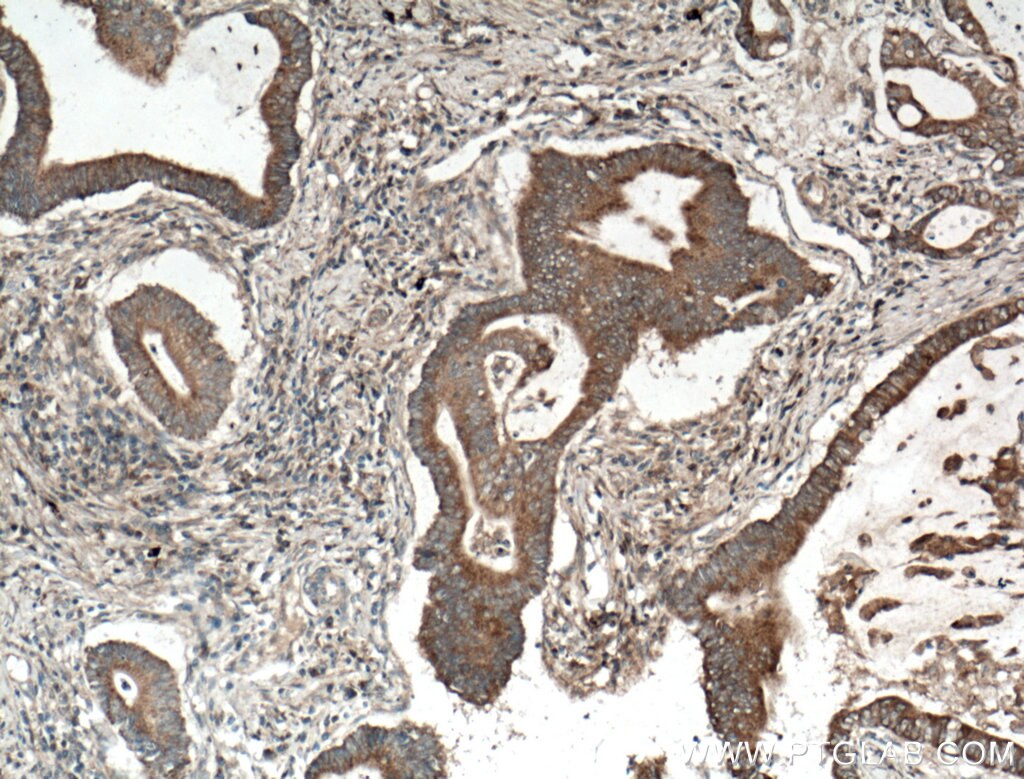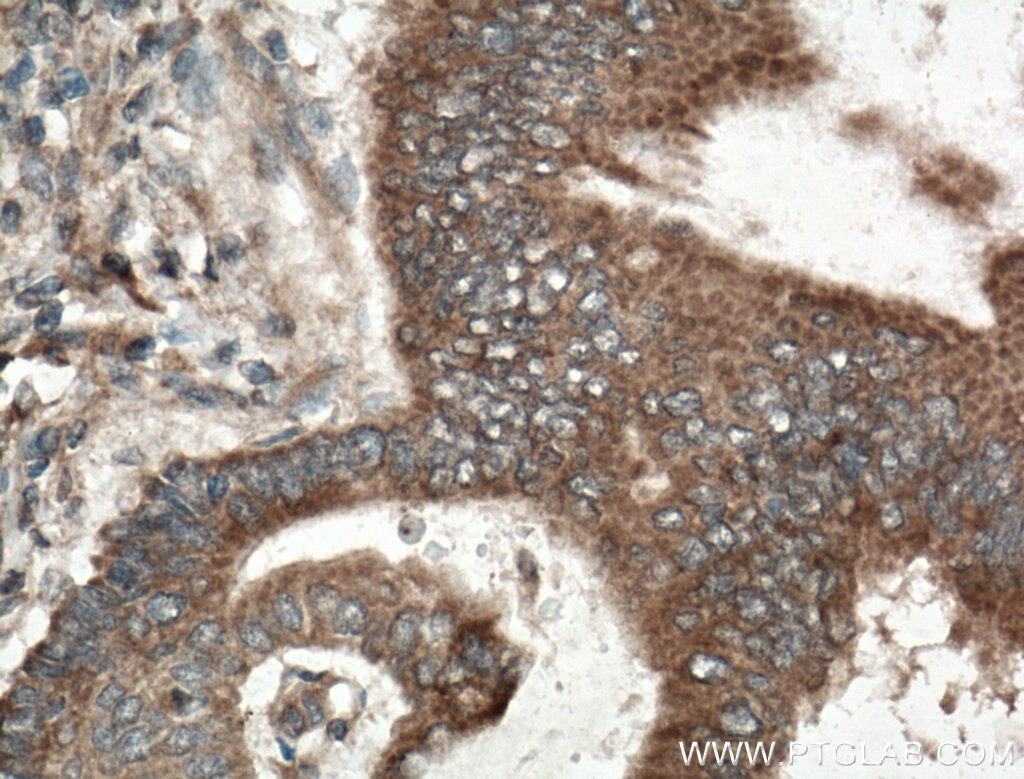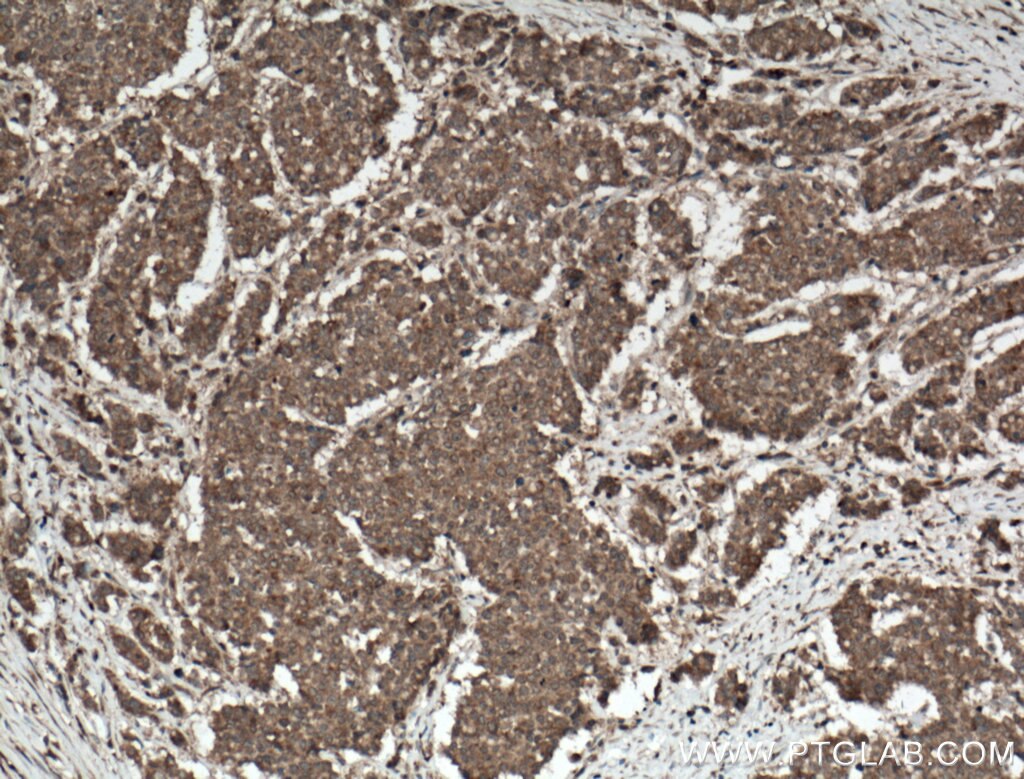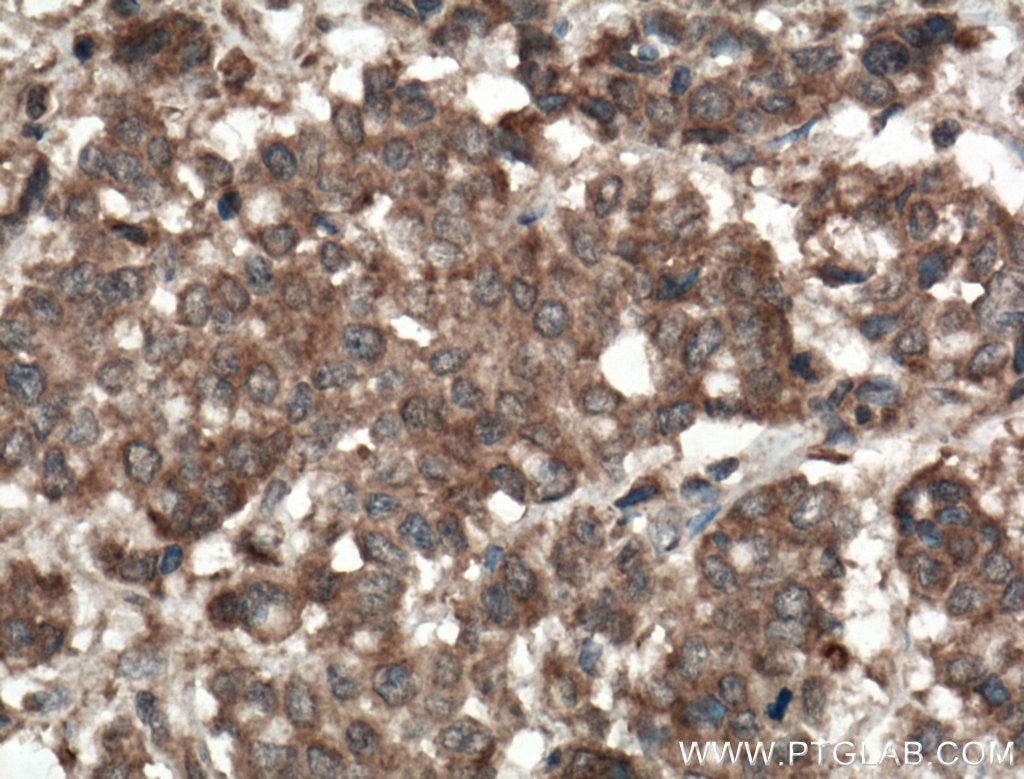- Phare
- Validé par KD/KO
Anticorps Polyclonal de lapin anti-RKIP
RKIP Polyclonal Antibody for WB, IHC, ELISA
Hôte / Isotype
Lapin / IgG
Réactivité testée
Humain, rat, souris
Applications
WB, IHC, ELISA
Conjugaison
Non conjugué
N° de cat : 10575-1-AP
Synonymes
Galerie de données de validation
Applications testées
| Résultats positifs en WB | tissu cérébral de souris, tissu hépatique de souris, tissu testiculaire de souris |
| Résultats positifs en IHC | tissu de cancer de l'estomac humain, tissu de cancer du côlon humain il est suggéré de démasquer l'antigène avec un tampon de TE buffer pH 9.0; (*) À défaut, 'le démasquage de l'antigène peut être 'effectué avec un tampon citrate pH 6,0. |
Dilution recommandée
| Application | Dilution |
|---|---|
| Western Blot (WB) | WB : 1:500-1:1000 |
| Immunohistochimie (IHC) | IHC : 1:50-1:500 |
| It is recommended that this reagent should be titrated in each testing system to obtain optimal results. | |
| Sample-dependent, check data in validation data gallery | |
Applications publiées
| KD/KO | See 1 publications below |
| WB | See 1 publications below |
| IHC | See 3 publications below |
Informations sur le produit
10575-1-AP cible RKIP dans les applications de WB, IHC, ELISA et montre une réactivité avec des échantillons Humain, rat, souris
| Réactivité | Humain, rat, souris |
| Réactivité citée | Humain, souris |
| Hôte / Isotype | Lapin / IgG |
| Clonalité | Polyclonal |
| Type | Anticorps |
| Immunogène | RKIP Protéine recombinante Ag0864 |
| Nom complet | phosphatidylethanolamine binding protein 1 |
| Masse moléculaire calculée | 21 kDa |
| Poids moléculaire observé | 23 kDa |
| Numéro d’acquisition GenBank | BC008714 |
| Symbole du gène | PEBP1 |
| Identification du gène (NCBI) | 5037 |
| Conjugaison | Non conjugué |
| Forme | Liquide |
| Méthode de purification | Purification par affinité contre l'antigène |
| Tampon de stockage | PBS avec azoture de sodium à 0,02 % et glycérol à 50 % pH 7,3 |
| Conditions de stockage | Stocker à -20°C. Stable pendant un an après l'expédition. L'aliquotage n'est pas nécessaire pour le stockage à -20oC Les 20ul contiennent 0,1% de BSA. |
Informations générales
Raf kinase inhibitor protein (RKIP), also termed phosphatidylethanolamine binding protein PEBP1, was initially identified as a potent inhibitor of Raf-1/MEK/ERK, NF-kB, and G-protein-coupled receptor signaling pathways. Later RKIP has been further identified as a metastasis suppressor and its loss of expression has been reported in various cancers. Its expression has been proposed as a prognostic marker for patients diagnosed with the above cancers.
Protocole
| Product Specific Protocols | |
|---|---|
| WB protocol for RKIP antibody 10575-1-AP | Download protocol |
| IHC protocol for RKIP antibody 10575-1-AP | Download protocol |
| Standard Protocols | |
|---|---|
| Click here to view our Standard Protocols |
Publications
| Species | Application | Title |
|---|---|---|
FASEB J Menstrual fluid factors facilitate tissue repair: identification and functional action in endometrial and skin repair. | ||
Anticancer Res Differential Protein Expression of Lymph Node Metastases of Papillary Thyroid Carcinoma Harboring the BRAF Mutation. | ||
J Ethnopharmacol AR/RKIP pathway mediates the inhibitory effects of icariin on renal fibrosis and endothelial-to-mesenchymal transition in type 2 diabetic nephropathy
| ||
Medicine (Baltimore) Prognostic significance of RKIP, TGM2, and CMTM4 expression in oral squamous cell carcinoma |
